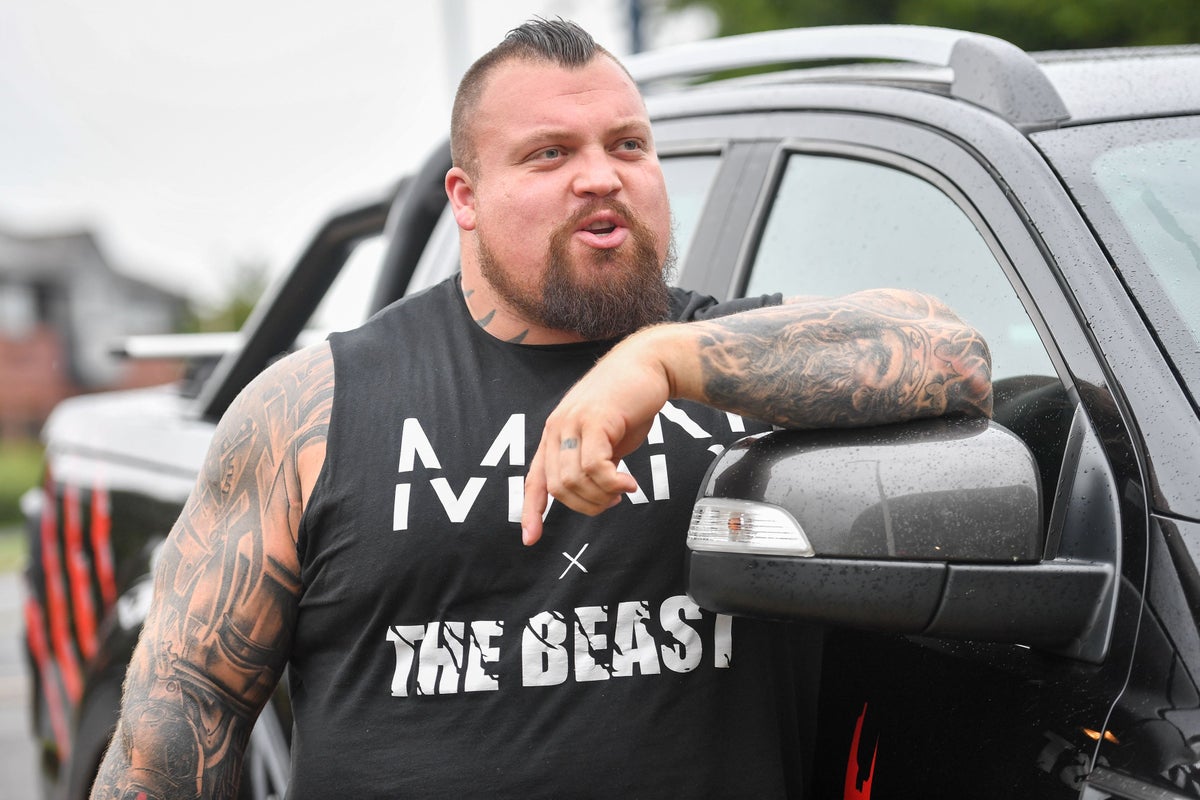
Support truly
independent journalism
When we think of a world-class strongman and deadlift champion like Eddie Hall, we imagine their superhuman strength comes from their bulky muscles.
But scientists have discovered the secret to Hall’s Herculean power may stem from a set of three long, thin muscles in the leg.
Together known as “guy ropes” muscles, the trio work to stabilise the pelvis and the thigh, like the guy ropes used to secure a tent.
The researchers said these muscles – called sartorius, gracilis and semitendinosus – were 140% to 202% larger in Hall compared with men who do not strength train.
People have been interested in strength sports and strong men since the dawn of civilisation… but the amount of scientific work studying people like Eddie Hall has been almost zero— Prof Jonathan Folland
Jonathan Folland, professor of neuromuscular performance at Loughborough University’s School of Sport, Exercise and Health Sciences, said: “You would anticipate that someone who is extraordinarily strong, like Eddie Hall, would have very big muscles – and you can, kind of, discern that by looking at him.
“We expected the big muscles involved in extending the knee and hip would show the greatest development.
“Whilst these muscles were certainly well developed, we were surprised that the greatest muscular development was of the long, thin ‘guy ropes’ muscles.
“These muscles have had very little attention scientifically, so we don’t really know how important they are in different tasks.
“But to find that they were really very well developed in someone who has spent decades lifting and carrying heavy loads – and is very good at that – was really interesting.
“These muscles clearly are more important for lifting and carrying very heavy loads than we previously thought.”
Hall, who won the World’s Strongest Man title in 2017, also held the record for the heaviest deadlift in history of 500kg until it was broken by Iceland’s Hafthor Julius Bjornsson in 2020.
Prof Folland said: “People have been interested in strength sports and strong men since the dawn of civilisation… but the amount of scientific work studying people like Eddie Hall has been almost zero.”
The researchers invited Hall, also known as The Beast, to take part in a series of tests at Loughborough University, including MRI scans and isometric mid-thigh pulls – a reliable way to test maximum strength without performing a deadlift.
Their aim was to understand more about how strong people’s muscles are across different populations, from extremely strong athletes like Hall to those who are weak and frail.
Hall’s results were compared to more than 200 people including elite athletes, people who trained regularly and untrained individuals.
Findings published in the Journal of Applied Physiology revealed Hall’s lower body muscle mass was almost twice that of untrained men while his quadriceps muscles, which are on the front of the thigh, were twice as large.
The calf muscles – known as plantar flexor – were also 120% larger than the untrained men, the researchers said.
The team also found that his patella tendon, the thin flexible tissue where his quadriceps muscles attach, was only 30% larger, despite the quadriceps being twice as large.
This suggests muscles are much more adaptable than tendons with training, the researchers said.
Other muscles, such as those involved in flexing the hip, showed only a modest development compared with untrained people, the team added.
Hall said: “It’s been very interesting to sort of learn how your muscles react and the tendons react to the forces I’ve been putting through my body.”
Dr Tom Balshaw, also from the university’s School of Sport, Exercise and Health Sciences, said: “Overall, the results suggest how adaptable the muscular system is, with the greatest muscular development of the muscles that Eddie trains and uses the most.
“This suggests that we can all change and develop our muscular system to improve the function and performance of our muscles.”







